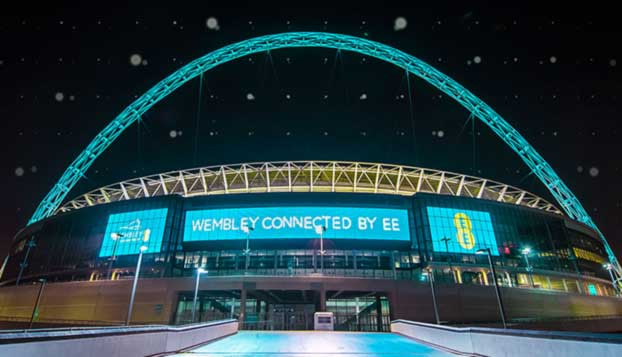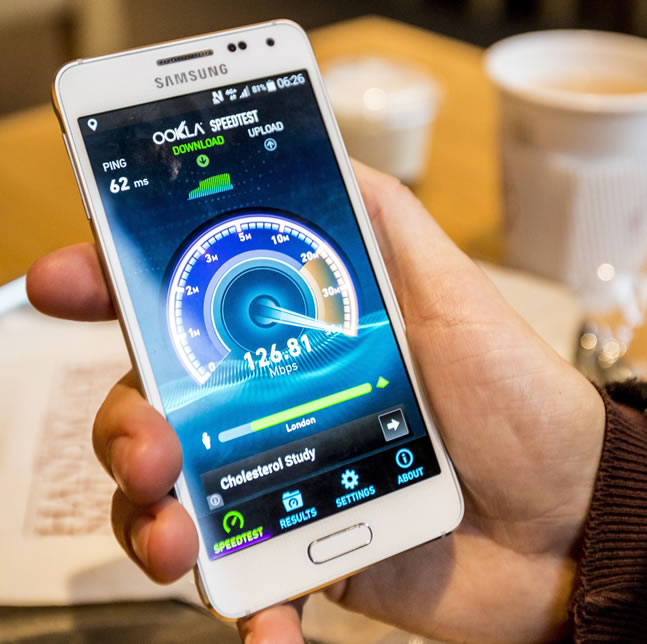
EE celebrated the third birthday of its 4GEE service on the 30th of October and it had plenty to celebrate, as throughout those three short years it has held its position as the UK’s largest and fastest 4G network. That’s quite an achievement in itself, but it’s just the tip of the iceberg. Follow us then, as we take you through a guided history of 4G on EE.
EE: Year 1

EE launched its 4G service on the 30th of October 2012. The network had a fairly wide initial roll out of 11 cities, so it hit the ground running. Bristol, Birmingham, Cardiff, Edinburgh, Glasgow, Leeds, Liverpool, London, Manchester, Sheffield and Southampton were the lucky cities chosen to be first in line for 4G.
EE was lucky here as it already had holdings of 1800 MHz spectrum that it could leverage for 4G, while O2, Vodafone and Three were left waiting in the wings, holding out for Ofcom’s 4G spectrum auction.
That occurred a few months later and concluded in February 2013. Vodafone came away with the most spectrum, but EE nabbed enough that it still had more 4G spectrum holdings than any other UK network overall.
EE went from strength to strength throughout the rest of its first year of 4G. 50 towns and cities had access to super speedy data by the end of March, doubling to over 100 by late August.
As its coverage grew so too did its customers, with over 500,000 of them signing up to its 4G service by early June 2013 and over 1 million by early September.
But while EE’s widespread coverage helped a lot, the real secret to its success might be the fact that it’s always pushing for newer, better and faster services. The first taste of this was ‘double speed’ 4G, which launched in early 2013 and by late July was available in 15 UK cities, giving customers even faster speeds, when rival networks didn’t even have a standard 4G service yet.
EE only really started to see any 4G competition at the end of August 2013, when O2 and Vodafone each launched 4G networks of their own, with O2 bringing connectivity to London, Leeds and Bradford, while Vodafone initially stuck to just London.
But EE was already miles ahead, with 4G available for 60% of the UK population.
EE: Year 2

4GEE went into its second year with a bang, beginning trials of a 300Mbps LTE-A service in early November 2013. At the time this was the world’s fastest 4G network, though its use was initially limited to companies in London’s Tech City.
By the beginning of 2014 the network had signed up over 2 million 4G customers, showing that competition from O2 and Vodafone had done nothing to slow it down.
Its availability continued to grow too. 4GEE was rolled out to 250 UK towns by the end of July 2014 and by the end of August EE hit an even bigger milestone, with 75% of the UK population able to get a 4GEE signal, across 263 major towns and cities as well as over 2,500 smaller communities.
The network also started building partnerships and business orientated services. It helped get Glastonbury festival connected up to 4G speeds and teamed up with Wembley Stadium, with ambitions of making it the world’s best connected stadium.
EE closed out the year on a high too, by extending 4G coverage beyond just the towns and cities of the UK to even the Channel Tunnel and with the launch of EE TV, which showed the company was moving into new areas and becoming more than just a mobile network.
Yet it was still all based around 4G, allowing customers to watch and record content from phones, tablets and televisions over 4G or Wi-Fi.
EE: Year 3

Exactly two years after launching 4G, EE announced the launch of 4G+. This was its new LTE-A service that it had begun trialling in 2013.
The service was initially only available in central London and it hasn’t expanded much beyond that, but if you’re lucky enough to live or work in the nation’s capital you can take advantage of blazing fast 4G speeds of up to 150Mbps.
You won’t be surprised to hear that EE’s 4G customer numbers had continued to surge, with the network reporting 7.7 million 4GEE customers by January 2015. That was a rise of 5.7 million customers in just one year.
Despite having only recently launched LTE-A at this point EE’s need for speed seemingly hadn’t been sated, as the network trialled speeds of over 400Mbps at Wembley Stadium. That was another record, this time the fastest in Europe.
We’ve not seen real world speeds that high yet, but it can surely only be a matter of time, especially with EE already now planning 1Gbps trials.
The network isn’t all about speed though, as in April 2015 it branched out into WiFi Calling. We’ve covered that in depth elsewhere, but essentially it’s one more way you can stay connected, allowing you to seamlessly text and talk over Wi-Fi, which could be especially useful in coverage black spots.
 EE branched out yet again in June, with the 4GEE Action Cam. This was the world’s first 4G action camera, allowing extreme sports enthusiasts to live stream their adventures wherever they are. It was presumably a success as EE has already followed it up with the 4GEE Capture Cam.
EE branched out yet again in June, with the 4GEE Action Cam. This was the world’s first 4G action camera, allowing extreme sports enthusiasts to live stream their adventures wherever they are. It was presumably a success as EE has already followed it up with the 4GEE Capture Cam.
In the last year or so the network has also created a respectable selection of own-brand tablets and smartphones, including the EE Rook, which launched in July 2015 for just £49, making it the UK’s lowest priced 4G handset.
By the end of July EE had 4G in 600 towns and as of today its coverage reaches 666 large towns and cities, over 6,900 smaller towns and villages and 93% of the UK population.
With such impressive growth it’s no wonder BT is looking to acquire the company, and with the £12.5 billion deal now provisionally approved EE could be close to starting an even more exciting new chapter.
That brings us up to now, where EE has 93% population coverage for 4GEE, with the network reaching 666 large towns and cities and more than 6,900 small towns and villages. It’s the biggest and fastest 4G network in the UK for the last three years. So happy birthday EE. Here’s hoping the next three years are just as impressive.
For a closer look at each pivotal moment read on below, where we’ve created a timeline of events below.
30th October 2012: EE launches its 4G service
This was perhaps the single biggest moment to date for EE. The network’s 4G service arrived a full year before competitors, giving it a massive head start and helping it gain and hold onto the lead that it still has today.
It managed to launch early by using 1800 MHz spectrum it already had, rather than having to wait for Ofcom’s 4G spectrum auction.
The super speedy service was initially launched in 11 UK cities and EE planned at the time to bring it to 98% of the UK population by the end of 2014. That’s not a goal it’s achieved, but with 93% of the UK population and 666 large towns and cities now covered it’s well on the way.
20th February 2013: EE wins more spectrum in Ofcom’s auction
Less than six months after launch EE’s 4G network had grown significantly and it was only going to get bigger, helped along by the company winning 2x5MHz of 800MHz spectrum and 2x35MHz of 2.6GHz spectrum, at a price of £588,876,000 in Ofcom’s spectrum auction.
EE wasn’t the biggest winner at the auction, but it came away with enough to ensure it still had more spectrum overall than any other UK network.
In total it left EE with 36% of the UK’s spectrum holdings. Vodafone’s big bids at the auction secured it 28%. O2 was left with 15%, Three with 12% and BT with 9%.
28th March 2013: EE 4G is live in 50 towns and cities
Just five months after launch EE’s 4G network had spread to 50 towns and cities, accounting for the homes and businesses of 50% of the UK population.
9th April 2013: EE announces ‘double speed’ 4G
Not content with just 4G, EE announced launched its 4G double speed service, set to make things even faster, with plans to roll it out to 10 UK cities by summer 2013.
6th June 2013: EE passes half a million 4G customers
Just seven months after launch, EE already had over 500,000 4G customers. At this point no other UK network even had a 4G service.
24th July 2013: Double speed arrives in 15 UK cities
Just three and a half months after announcing its double speed service EE had it live in 15 cities across the UK.
d it’s gone from strength to streng
28th August 2013: 4GEE is available in 100 towns
Accrington becomes the 100th UK town to be covered by superfast 4GEE, with 60% of the UK population covered in total just ten months after launch.
9th September 2013: EE hits the 1 million customer milestone
More than one million customers were using superfast 4GEE by September 9th 2013 and the network’s 4G adoption rates in Britain were among the fastest in the world.
5th November 2013: EE switches on the world’s fastest 4G network
EE began trialling its LTE-A network, capable of reaching speeds of 300Mbps, making it the fastest 4G network in the world at the time. Initially though it was only available to companies in London’s Tech City.
7th January 2014: EE reaches two million 4G customers
Just four months after signing on one million 4G customers EE doubled its 4G subscriber base, while 4GEE coverage was at almost 70% of the UK population.
26th February 2014: EE signs six-year partnership deal with Wembley Stadium
EE’s deal with Wembley Stadium began on this day, with the partnership set to bring 4G and other mobile services to the iconic stadium.
25th April 2014: 4GEE is now available in 200 UK towns
Rhyl became the 200th UK town to get access to 4GEE. That happened just 18 months after launch and amounted to a total population coverage of 72%.
31st July 2014: 4G from EE is now available in 250 UK town
Three months after hitting its 200th UK town 4GEE had arrived in 50 more.
28th August 2014: EE 4G becomes accessible to 75% of the UK population
Less than two years after launch 4G from EE was available to 75% of the UK population, across 263 major towns and cities and over 2,500 villages and small towns.
24th September 2014: EE brings 4G to the Channel Tunnel
EE’s 4G service isn’t limited to towns and cities, as in September 2014 the network brought it to the Channel Tunnel. Over the years the network has also connected various train stations, airports and shopping centres, so people can get online wherever they are.
8th October 2014: EE TV launched
In late 2014 EE moved into a new area of business, launching EE TV, allowing customers to watch a range of live and recorded content over 3G or Wi-Fi on televisions, phones and tablets.
30th October 2014: EE launches 4G+
EE’s LTE-A service goes live for consumers across central London, under the name 4G+. It’s the next generation of 4G, with real world speeds of up to 150Mbps.
9th January 2015: 4GEE reaches 7.7 million customers
EE’s network goes from 2 million to 7.7 million 4GEE customers in just 12 months, showing that its growth is in no danger of slowing down, despite intensifying competition from its 4G-connected rivals.
27th February 2015: EE trials Europe’s fastest 4G
EE showcased 4G speeds of over 400Mbps at Wembley Stadium. These sorts of speeds aren’t yet available to consumers, but they were the fastest in Europe and hopefully a sign of things to come.
7th April 2015: EE launches WiFi Calling
WiFi Calling enables customers to call and text over a Wi-Fi network, giving them one more way to stay in touch.
9th June 2015: EE launches the world’s first 4G action camera
The 4GEE Action Cam was the world’s first 4G action camera and showed EE’s commitment to finding new and innovative uses for 4G technology.
7th July 2015: EE launches the UK’s lowest priced 4G smartphone
EE has really started getting into hardware, with a range of own brand smartphones and tablets now available. The EE Rook, which was launched in July 2015, was the UK’s lowest priced 4G smartphone at just £49, lowering the barrier for entry to 4G speeds.
27th July 2015: EE switches 4G on in its 600th UK town
Exmouth became the 600th large town or city in the UK to benefit from the roll out of 4GEE. By this point the network had also brought 4G speeds to over 6,000 smaller towns and villages.
28th October 2015: BT’s acquisition of EE is provisionally approved
EE could soon be bought out by BT, as the acquisition has been provisionally approved. This combination of two telecoms powerhouses could create a super-company, leading the way in mobile, landline, broadband and TV.
Today
That brings us up to now, where EE has 93% population coverage for 4GEE, with the network reaching 666 large towns and cities and more than 6,900 small towns and villages. It’s the biggest and fastest 4G network in the UK for the last three years. So happy birthday EE. Here’s hoping the next three years are just as impressive.







